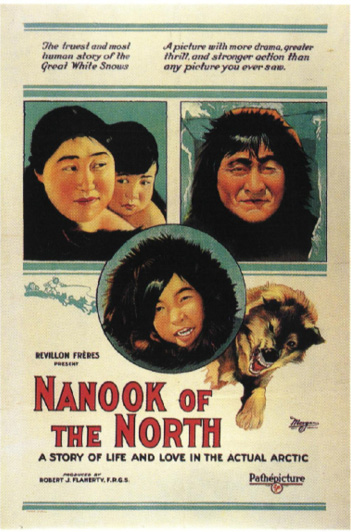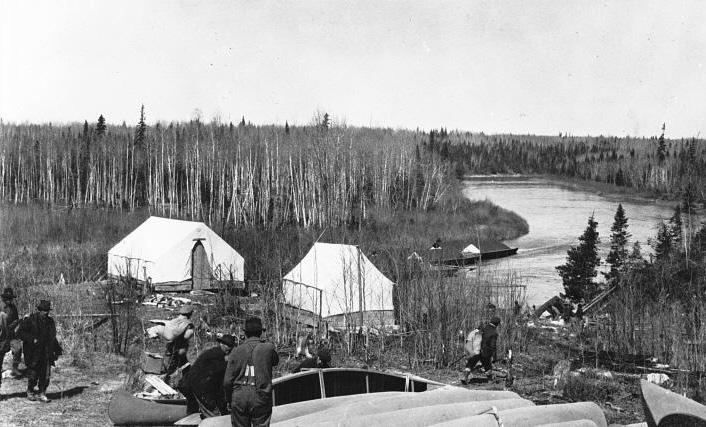Think back to the fur trading days in our Northern Wilds, with all its lakes and rivers. The fur trading companies that usually come to mind are the Hudson’s Bay Company (HBC; chartered by British in 1670); the North West Company (NWC; at Grand Portage and Fort William); John Jacob Astor’s American Fur Company (1808-1847); and the short-lived XY Company (1798-1804; merged with NWC). Of course, the big fur trade merger was in 1821 with HBC and NWC.
However, there’s one fur trade company in our region that has received less recognition and attention, yet for almost 40 years it was the main rival of the large British-owned HBC in parts of Canada. It was a French company—Revillon Frères (also known as Revillon Brothers). It had seven Ontario fur trading posts and stores, including some in northwestern Ontario: Jackfish Post (1905-1916) at the northern end of Lake Nipigon; Nipigon Post (1905-1910) at the mouth of the Nipigon River flowing into Lake Superior; and on Pagwa River (1915-1932), which gave them a water route to James Bay.
A fleet of schooners, power boats, scows, barges, and steam tugs operated on Lake Nipigon transporting supplies to the north end of the lake. Unfortunately, the operations had risks. In October 1910, the steamer Minerva was transporting a cargo of cement, hay, and package freight across Lake Nipigon when she struck a rock and sank 29 km from South Bay.
One ship worthy of noting is the Revillon ship, the two-masted auxiliary schooner 100-foot-long Jean Revillon (later renamed Fort James) owned by Albert and Jean Revillon, which was the first ship to circumnavigate the continent of North America in 1928-29.
Originally called la Maiso Givelet, the company was founded in 1723 in Paris, France, as a French fur sales and luxury goods company. Then, 116 years later in 1839, the company was purchased by Louis-Victor Revillon and renamed Revillon Frères.
By the end of the 19th century, Revillon Frères had stores in Paris, London, New York City, and Montreal. By 1903, it had 23 stores across Canada and was setting up a network of independent fur trading posts across northern Canada to compete against HBC. And by 1912, the company had 125 trading posts in America and Russia.
Revillon’s Canadian eastern region included the vast area from Lake Nipigon to James Bay. By 1909, Revillon had 48 stores in the eastern Arctic division while HBC had 52, only four more. And on Nipigon’s Main Street, Revillon built one of the first stores in the town.

In Canada, it was incorporated in 1912 as the Revillon Frères Trading Company Ltd. Then, 14 years later in 1926, the HBC bought 54 percent of the company and 10 years later in 1936, HBC purchased the remaining shares to make Revillon Frères Trading Company a wholly-owned HBC subsidiary. Two years later, HBC renamed the subsidiary Rupert’s Land Trading Company.
As a way to promote itself, Revillon Frères financed the historic 1922 documentary Nanook of the North: A Story of Life and Love in the Actual Arctic by filmmaker Robert Flaherty, who had lived for a time in Port Arthur (now Thunder Bay). For filming, he used two hand-cranked cameras, a tripod, and some lighting equipment, plus he had a portable developing and printing machine while housed in a cabin at Revillon’s fur trade post on Hudson Bay. The 79-minute silent film with English subtitles, portraying the life and survival of an Inuk hunter and family on northeastern Hudson Bay, earned Flaherty the recognition of being the first documentary filmmaker and the film as the first commercially successful full-length documentary. In 1989, the film was among the initial 25 films chosen by the U.S. Library of Congress for preservation in the U.S. National Film Registry for “being culturally, historically or aesthetically significant.” In the winter of 1928-29, another silent film, The Silent Enemy, about migrating caribou, was filmed at Revillon’s Windy Lake Post site, and released in 1930.
Over the years, incorrect references have been made that the Revillon Frères fur trading company eventually evolved into the giant cosmetic Revlon Company. However, there is no relation between the two. Revlon is a U.S. multi-national company founded in New York City on March 1, 1932, by brothers Charles and Joseph Revson, and chemist Charles Lachman.






